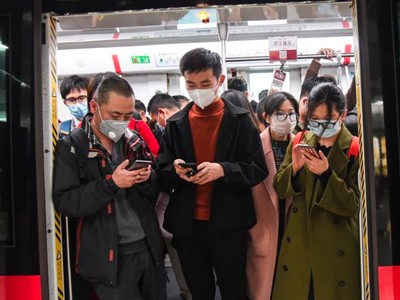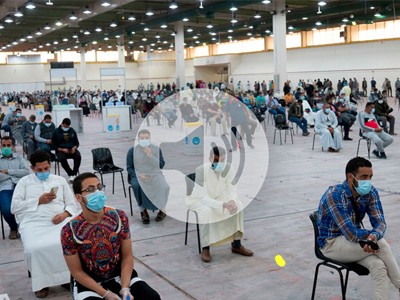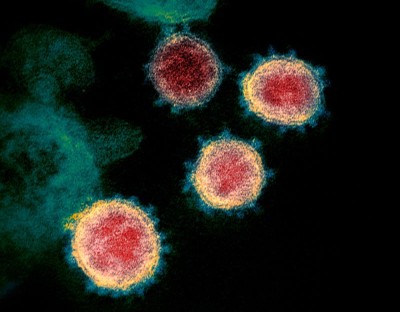Hospitals in New York City are gearing up to use the blood of people who have recovered from COVID-19 as a possible antidote for the disease. Researchers hope that the century-old approach of infusing patients with the antibody-laden blood of those who have survived an infection will help the metropolis - now the US epicentre of the outbreak - to avoid the fate of Italy, where intensive-care units (ICUs) are so crowded that doctors have turned away patients who need ventilators to breathe.

The efforts follow studies in China that attempted the measure with plasma - the fraction of blood that contains antibodies, but not red blood cells - from people who had recovered from COVID-19. But these studies have reported only preliminary results so far. The convalescent-plasma approach has also seen modest success during past severe acute respiratory syndrome (SARS) and Ebola outbreaks - but US researchers are hoping to increase the value of the treatment by selecting donor blood that is packed with antibodies and giving it to the patients who are most likely to benefit.
A key advantage to convalescent plasma is that it's available immediately, whereas drugs and vaccines take months or years to develop. Infusing blood in this way seems to be relatively safe, provided that it is screened for viruses and other infectious agents. Scientists who have led the charge to use plasma want to deploy it now as a stopgap measure, to keep serious infections at bay and hospitals afloat as a tsunami of cases comes crashing their way.
"Every patient that we can keep out of the ICU is a huge logistical victory because there are traffic jams in hospitals," says Michael Joyner, an anaesthesiologist and physiologist at the Mayo Clinic in Rochester, Minnesota. "We need to get this on board as soon as possible, and pray that a surge doesn't overwhelm places like New York and the west coast."
On 23 March, New York governor Andrew Cuomo announced the plan to use convalescent plasma to aid the response in the state, which has more than 25,000 infections, with 210 deaths. "We think it shows promise," he said. Thanks to the researchers' efforts, the US Food and Drug Administration (FDA) today announced that it will permit the emergency use of plasma for patients in need. As early as next week, at least two hospitals in New York City - Mount Sinai and Albert Einstein College of Medicine - hope to start using coronavirus-survivor plasma to treat people with the disease, Joyner says.

After this first rollout, researchers hope the use will be extended to people at a high risk of developing COVID-19, such as nurses and physicians. For them, it could prevent illness so that they can remain in the hospital workforce, which can't afford depletion.
And academic hospitals across the United States are now planning to launch a placebo-controlled clinical trial to collect hard evidence on how well the treatment works. The world will be watching because, unlike drugs, blood from survivors is relatively cheap and available to any country hit hard by an outbreak.
Arturo Casadevall, an immunologist at Johns Hopkins University in Baltimore, Maryland, has been fighting to use blood as a COVID-19 treatment since late January, as the disease spread to other countries and no surefire therapy was in sight. Scientists refer to this measure as 'passive antibody therapy' because a person receives external antibodies, rather than generating an immune response themselves, as they would following a vaccination.
The approach dates back to the 1890s. One of the largest case studies occurred during the 1918 H1N1 influenza virus pandemic. More than 1,700 patients received blood serum from survivors, but it's difficult to draw conclusions from studies that weren't designed to meet current standards.
During the SARS outbreak in 2002-03, an 80-person trial of convalescent serum in Hong Kong found that people treated within 2 weeks of showing symptoms had a higher chance of being discharged from hospital than did those who weren't treated. And survivor blood has been tested in at least two outbreaks of Ebola virus in Africa with some success. Infusions seemed to help most patients in a 1995 study in the Democratic Republic of the Congo, but the study was small and not placebo controlled. A 2015 trial in Guinea was inconclusive, but it didn't screen plasma for high levels of antibodies. Casadevall suggests that the approach might have shown a higher efficacy had researchers enrolled only participants who were at an early stage of the deadly disease, and therefore were more likely to benefit from the treatment.
Casadevall corralled support for his idea through an editorial in the Wall Street Journal, published on 27 February, which urged the use of convalescent serum because drugs and vaccines take so long to develop. "I knew if I could get this into a newspaper, people would react, whereas if I put it into a science journal, I might not get the same reaction," he says.
He sent his article to dozens of colleagues from different disciplines, and many joined his pursuit with enthusiasm. Joyner was one. Around 100 researchers at various institutes self-organized into different lanes. Virologists set about finding tests that could assess whether a person's blood contains coronavirus antibodies. Clinical-trial specialists thought about how to identify and enroll candidates for treatment. Statisticians created data repositories. And, to win regulatory clearance, the group shared documents required for institutional ethical-review boards and the FDA.
Their efforts paid off. The FDA's classification today of convalescent plasma as an 'investigational new drug' against coronavirus allows scientists to submit proposals to test it in clinical trials, and lets doctors use it compassionately to treat patients with serious or life-threatening COVID-19 infections, even though it is not yet approved.
"This allows us to get started," says Joyner. Physicians can now decide whether to offer the therapy to people with very advanced disease, or to those that seem to be headed there - as he and other researchers recommend. He says hospitals will file case reports so that the FDA gets a handle on which approaches work best.

Researchers have also submitted to the FDA three protocols for placebo-controlled trials to test the plasma, which they hope will take place at hospitals affiliated with Johns Hopkins, the Mayo Clinic and Washington University in St. Louis, along with other universities that want to take part.
The US tests of convalescent plasma aren't the first. Since early February, researchers in China - where the coronavirus emerged late last year - have launched several studies using the plasma. Researchers have yet to report on the status and results of these studies. But Liang Yu, an infectious-disease specialist at Zhejiang University School of Medicine in China, told Nature that in one preliminary study, doctors treated 13 people who were critically ill with COVID-19 with convalescent plasma. Within several days, he says the virus no longer seemed to be circulating in the patients, indicating that antibodies had fought it off. But he says that their conditions continued to deteriorate, suggesting that the disease might have been too far along for this therapy to be effective. Most had been sick for more than two weeks.
In one of three proposed US trials, Liise-anne Pirofski, an infectious-disease specialist at Albert Einstein College of Medicine, says researchers plan to infuse patients at an early stage of the disease and see how often they advance to critical care. Another trial would enrol severe cases. The third would explore plasma's use as a preventative measure for people in close contact with those confirmed to have COVID-19, and would evaluate how often such people fall ill after an infusion compared with others who were similarly exposed but not treated. These outcomes are measurable within a month, she says. "Efficacy data could be obtained very, very quickly."

Even if it works well enough, convalescent serum might be replaced by modern therapies later this year. Research groups and biotechnology companies are currently identifying antibodies against the coronavirus, with plans to develop these into precise pharmaceutical formulas. "The biotech cavalry will come on board with isolating antibodies, testing them, and developing into drugs and vaccines, but that takes time," says Joyner.
In some ways, Pirofski is reminded of the urgency she felt as a young doctor at the start of the HIV epidemic in the early 1980s. "I met with medical residents last week, and they are so frightened of this disease, and they don't have enough protective equipment, and they are getting sick or are worried about getting sick," she says. A tool to help to protect them now would be welcomed.
Since becoming involved with the push for blood as a treatment, Pirofski says another aspect of the therapy holds her interest: unlike a pharmaceutical product bought from companies, this treatment is created by people who have been infected. "I get several e-mails a day from people who say, 'I survived and now I want to help other people'," she says. "All of these people are willing to put on their boots and brush their teeth, and come help us do this."